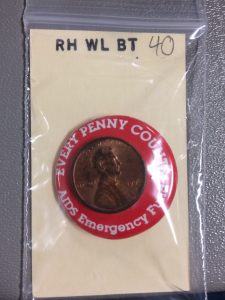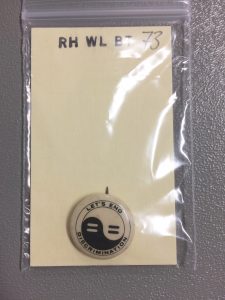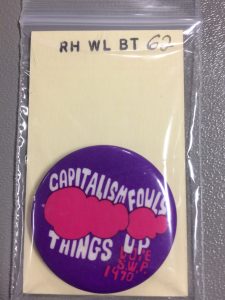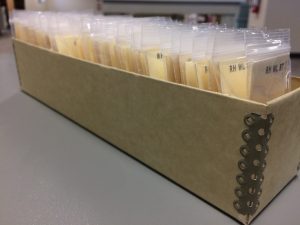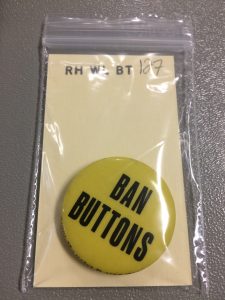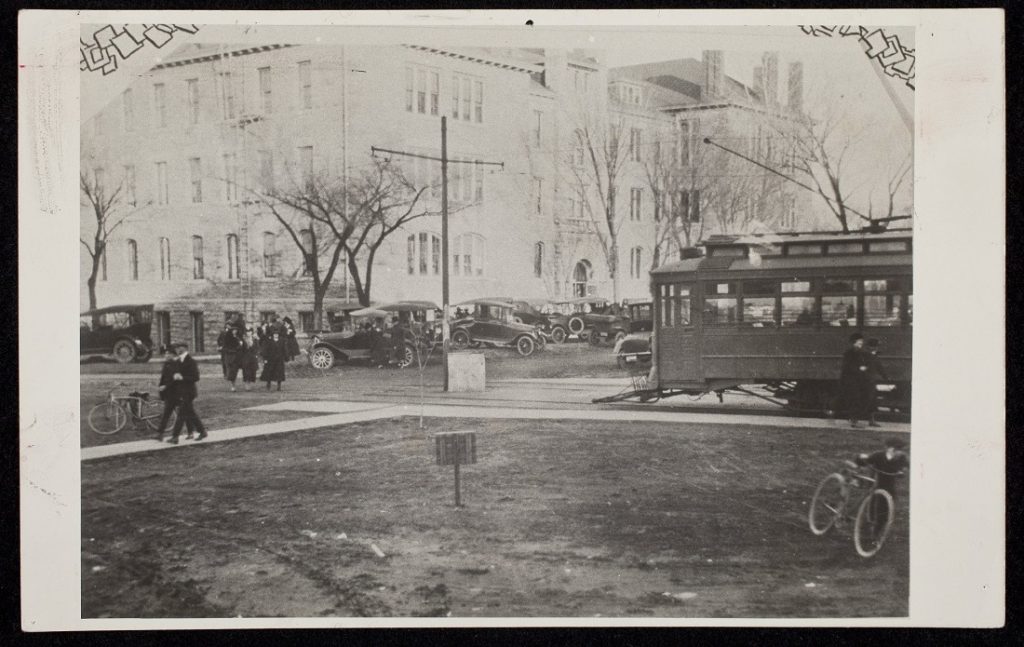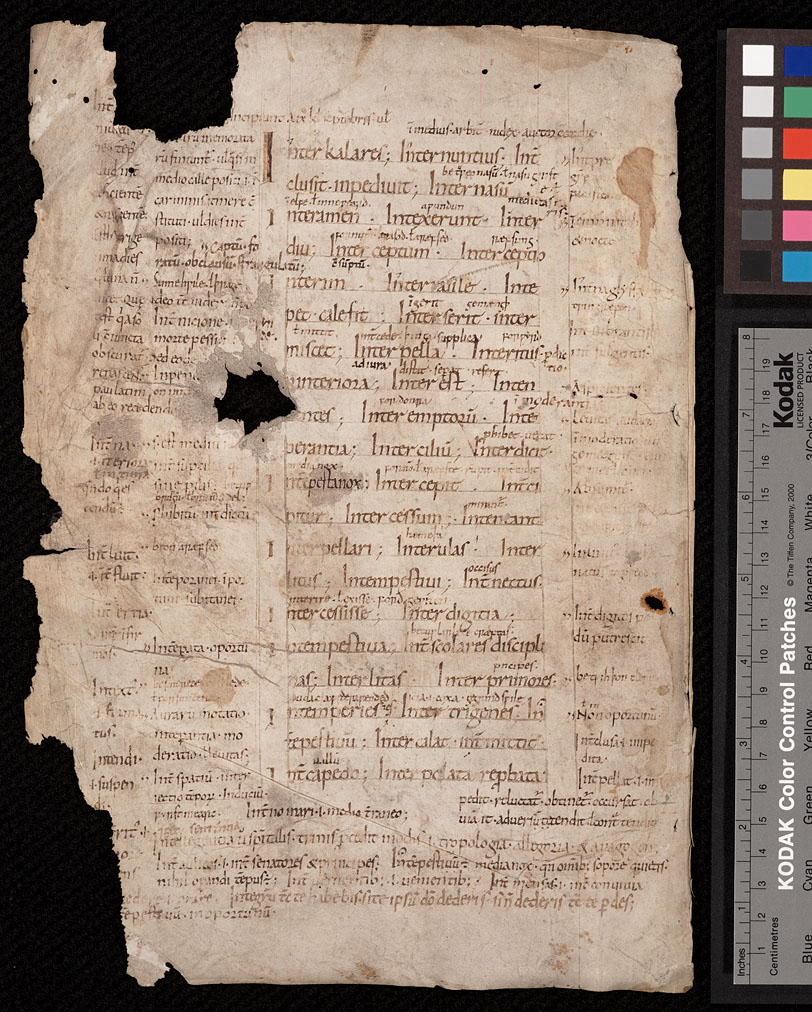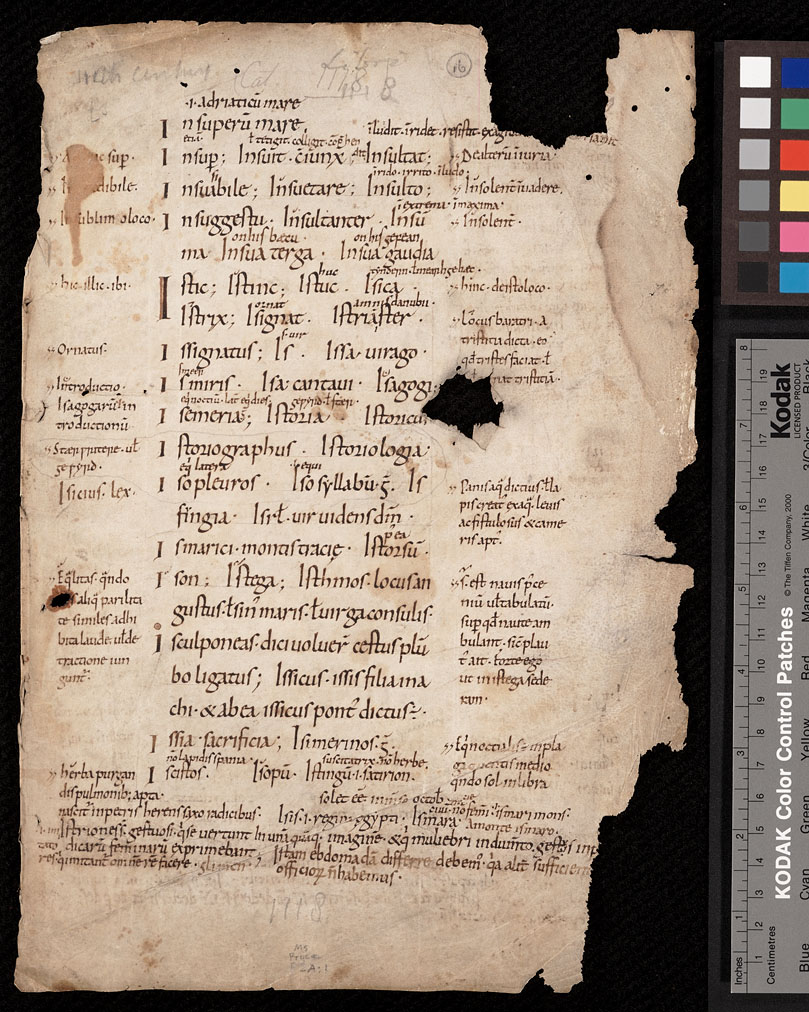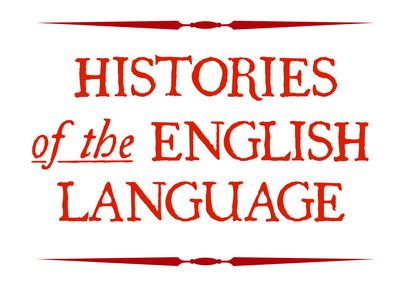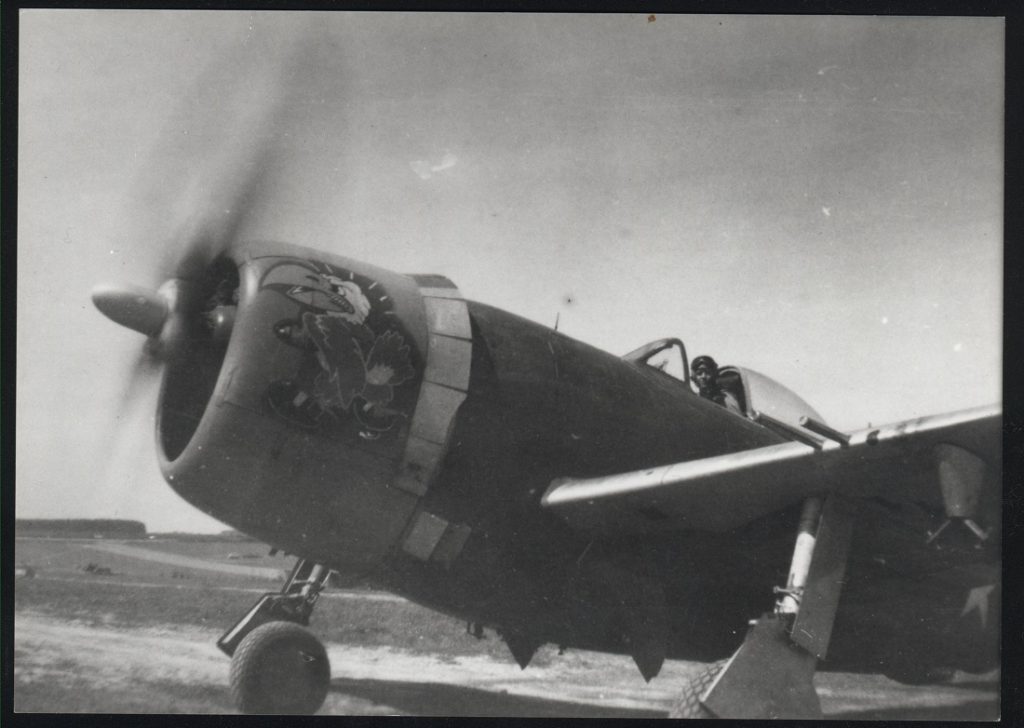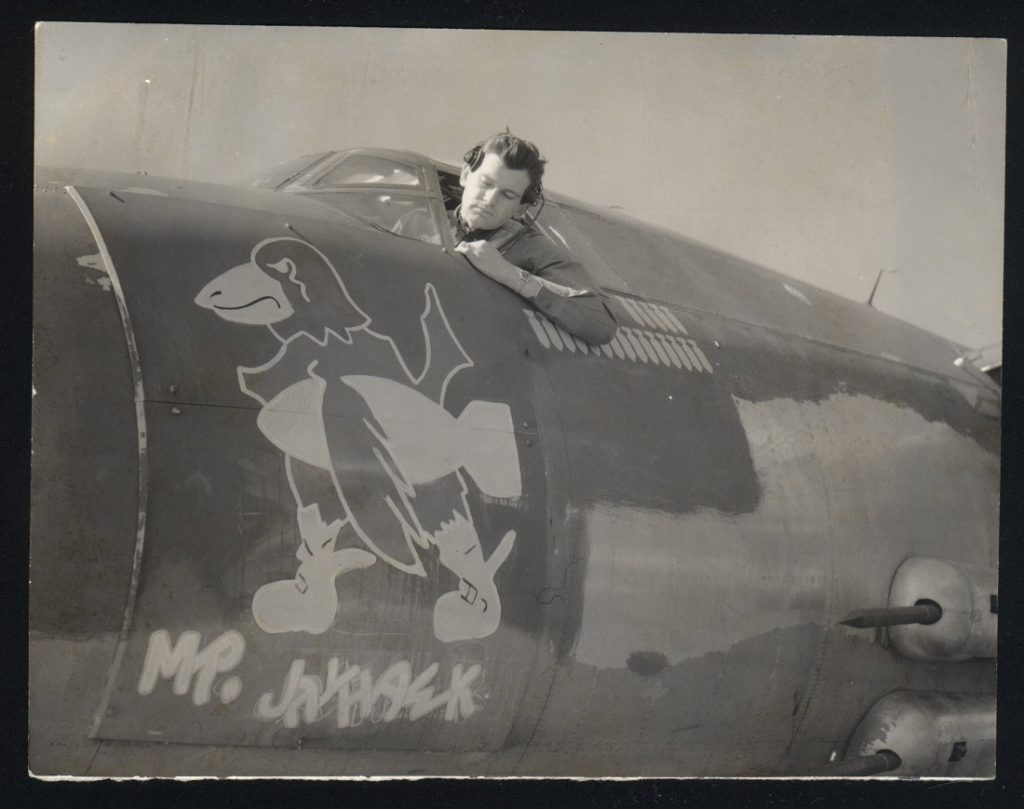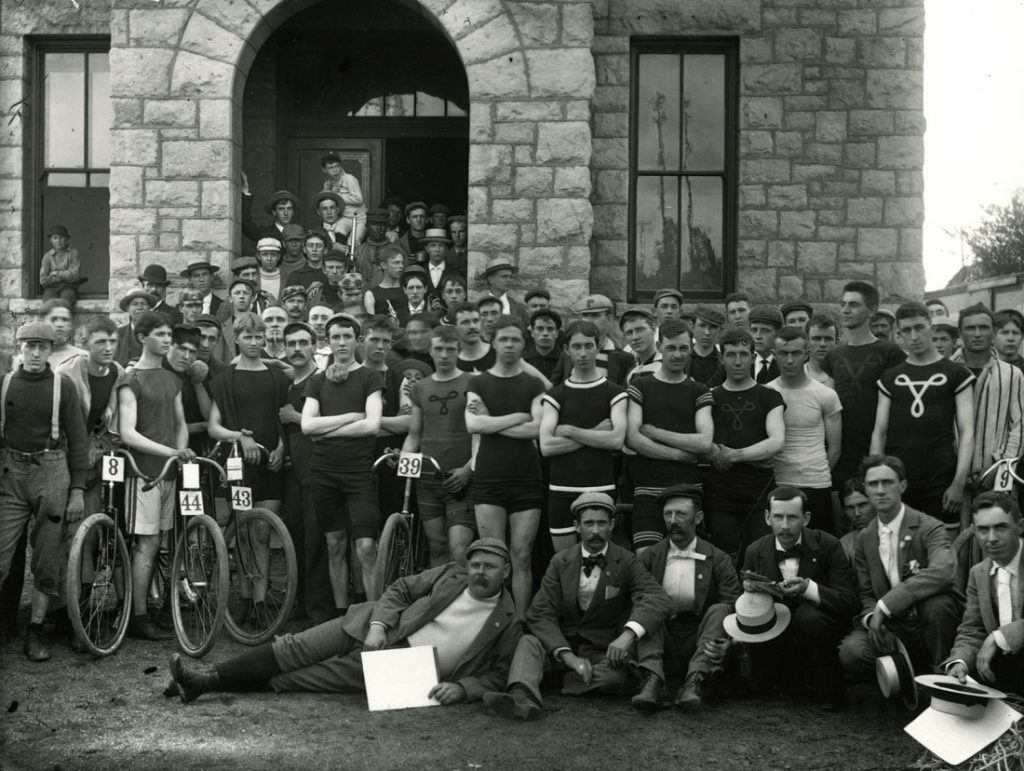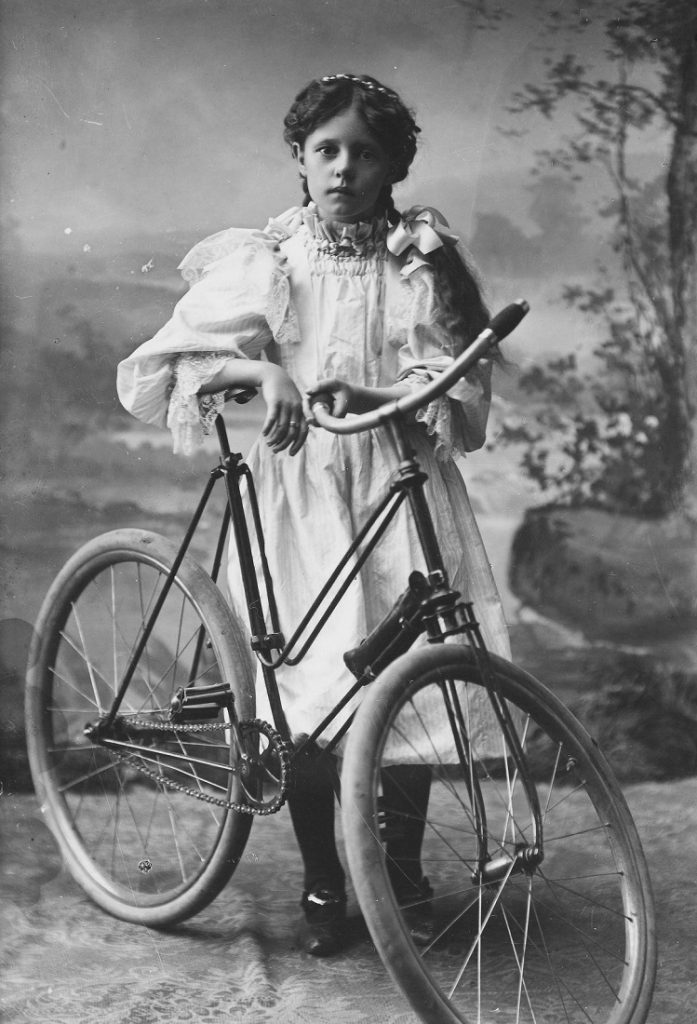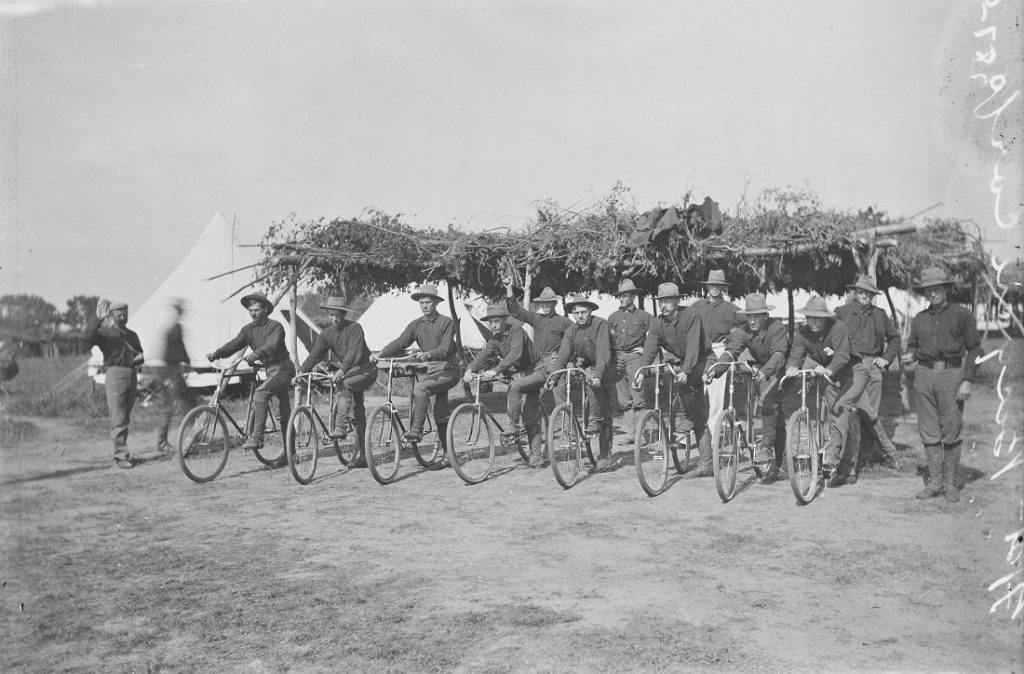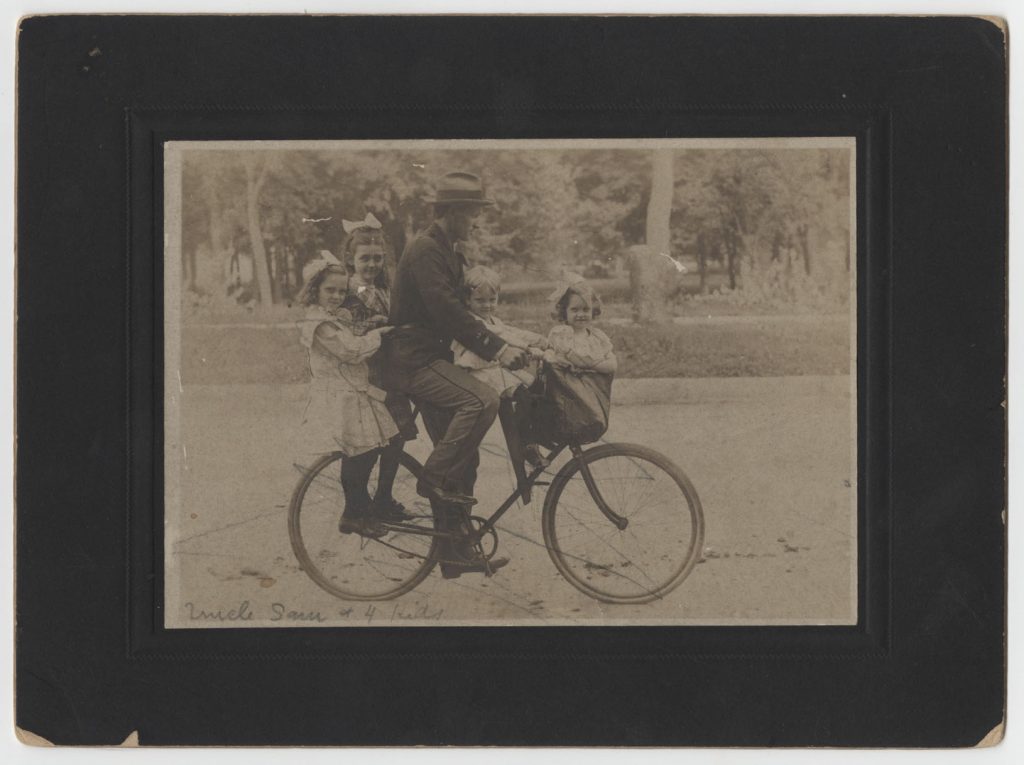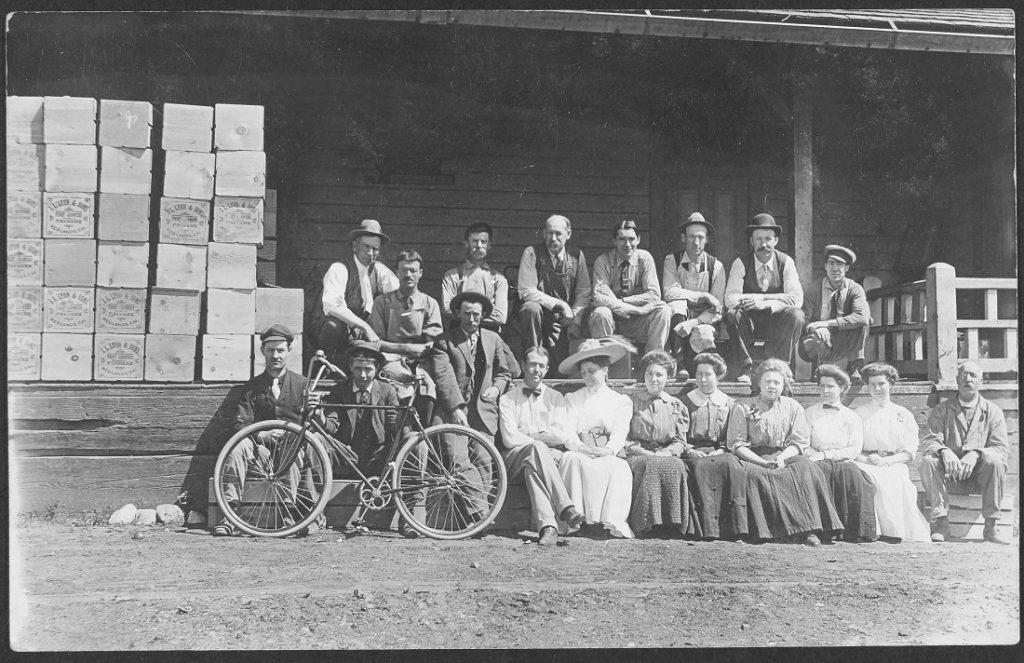Button Collection Proves Hot Button Issues Can Be On the Button. Literally.
June 12th, 2017One of the coolest collections in Spencer is the Wilcox Collection of Contemporary Political Movements. Established in 1965, the collection features materials in line with US left- and right-wing political literature from about 1960 to the present. Over the years, around 400 pinback buttons have been accessioned to the Wilcox Collection. This spring, I was tasked with housing these buttons for reasons of accessibility and preservation.
Figure 1. Many of the buttons concerned AIDS awareness. This button also shows how many of the buttons used multiple types of materials when constructed. “Every Penny Counts. AIDS Emergency Fund,” RH WL BT 40. Click image to enlarge.
Following a housing method for buttons used previously at Spencer, I divided the buttons into two different groups based on size: one for buttons under two inches in diameter and one for buttons 2 to <4 inches in diameter. This was to accommodate the two sizes of polyethylene bags the buttons would be housed in.
Figure 2. While many of the buttons were standard sizes, others sat on the extremes. This one is half an inch in diameter; the largest was almost 5 inches. “Let’s End Discrimination,” RH WL BT 73.
With the buttons divided, I cut the appropriate number of backings for each group out of 20-point board using our guillotine and boardshear, so they could fit in the 2” x 3” and 4” x 6” polyethylene bags. These could have also been easily cut with a scalpel or scissors, but due to the volume needed, I opted for the more industrial equipment. The backings served two purposes: to give rigidity to each individual button’s housings and to provide a place to write the call number for each button.
Figure 3. “Capitalism Fouls Things Up. Vote S.W.P. [Socialist Workers Party] 1970,” RH WL BT 62.
Once all of the materials were prepped, each button was assigned a call number that was placed on the 20-point board backing. For the sake of efficiency and clarity, I made a stamp with the common portions of the call number and then handwrote the unique portions. The backing was then placed in the appropriate size bag, followed by the corresponding button. Once housed, the smaller buttons were put in the lids and trays of slide boxes and the larger buttons were put in cassette tape boxes. The slide boxes were then placed in a large artifact box to keep them together.
Figure 4. Smaller buttons were placed in slide boxes like this in call number order. Each box fit about 30-40 buttons.
While this is not a complicated treatment, it makes the buttons easier to access and keeps them from touching each other so they do not have any negative effects on each other.
Figure 5. Some buttons were sillier than others. “Ban Buttons,” RH WL BT 127.
In addition to the physical housing, I created an extensive digital database noting information such as the call number, subject matter, date, and bibliographic record number for items already cataloged. This makes it easy for us to find individual buttons and compare buttons across the same subject matter.
Creating the digital database also required some research. Approximately a quarter of the buttons were not previously cataloged, so many of the pieces of information identified in the database were not known. While some gave more information than others, for many the context was not readily apparent. For several of these stumpers, I was able to use information published online from similar collections, like the Labadie Collection at the University of Michigan. In several instances, I would not have been able to determine if a button belonged in the collection without the help of other institutions like Spencer.
Jocelyn Wilkinson
2017 KU Graduate in Museum Studies
Museum Studies Conservation Intern, Conservation Services

